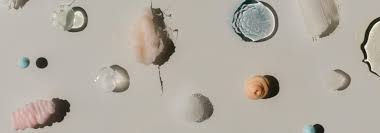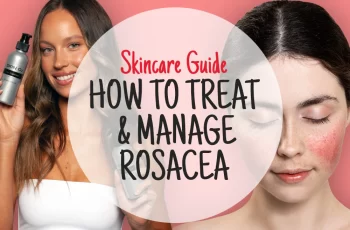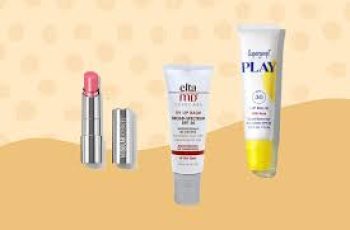
Endocrine Disruptors and Hormones in Skincare Products
In recent years, concerns have been raised over ingredients in personal care products like skincare that may interfere with normal hormone function. This category of substances is broadly called endocrine disruptors as they can affect estrogen, testosterone, thyroid and other hormonal pathways in the body. Common endocrine disrupting chemicals that may be found in skincare formulations include parabens, phthalates, UV filters (benzophenones), soy extracts, and triclosan. And the list seems to grow as more research emerges.
But are ingredients in personal care products that affect hormones dangerous o beneficial? It depends. Incases of menopause when estrogen levels are low, it can be beneficial to have estrogen stimulating skincare ingredients. However, in pregnancy and when trying to conceive and in breast cancer these may not be safe.
This blog will look at the ingredient in skincare products that affect your hormones and which are safe and which to avoid.
To get custom skincare advice, identify your Baumann Skin Type using our skin type quiz.
Hormones in Skincare: What We Know and Don’t Know
We know that some ingredients in skincare can get into the skin and stimulate hormone receptors. These are called agonist. So for example, an estrogen agonist is an ingredient that binds the estrogen receptor and gets it to have the same activity it would have if estrogen were to bind to it. An “agonist” causes the same effect as the ingredient whose name precedes the word agonist. so a testosterone agonist would act like testosterone. An antagonist would block activity. So an estrogen antagonist would block the effects of estrogen or estrogen agonists.
What we do not know- is how strong these effects are and if they cause any long term issues in the skin. Frankly- long term studies just have not been done. However, many skincare ingredients have been used for years and a causal relationships with them and health risks and disease has not been proven. So we really do not know if these are risky or not. It seems prudent that if you are trying to conceive a baby, are in puberty, or have any hormone responsive tumors, it is a good idea to avoid these ingredients.
Cell Culture and Animal Studies
While cell culture and animal studies provide initial insight into potential endocrine disruption, extrapolating these findings to human risk levels has major limitations. High-dose toxicity testing poorly reflects much lower chronic exposures from daily skincare use. Further, biological differences can make animal results poorly predictive for humans. For example, rapidly metabolizing mice may not accumulate ingredients over decades like human skin and tissues. Or effects seen in mice given 10x their body weight in chemicals daily does not really translate a 0.1% concentration in a skincare serum applied occasionally by a person. So while preliminary lab tests suggest chemicals may influence pathways controlling vital hormones, real-world human exposures differ greatly in dose, frequency and duration. Significant knowledge gaps remain in understanding if skincare ingredients alter, for example, puberty timing, fertility or menopause in aging skin over years and decades. Too many variables differ between a cultured cell, a short-lived mouse, and a person using a complex mixture of products daily for skin health and appearance over a lifetime. So while we can identify chemicals with potential hormonal activity in the lab, defining real risk requires data better mimicking long-term, low-dose human exposures.
Who Should Worry About Hormones in Skincare
Higher risk groups should exercise caution with exposures to hormones in skincare when possible. These sensitive high risk groups are people who are:
pregnant
breastfeeding
Infants
children still undergoing development
in puberty
planning to conceive (all genders)
having fertility issues
diagnosed with hormone-responsive cancers like breast, uterine and ovarian cancers
undergoing gender reassignment
If you have any of these issues- it is prudent to avoid estrogen and estrogen agonists and other EDCs in skincare products.
Definition of Endocrine Disruptor
An endocrine disruptor is a chemical compound that interferes with or mimics natural hormones in the body’s endocrine system. The endocrine system plays a vital role in regulating metabolism, reproduction, tissue function, growth and development through the release of hormones like estrogen, testosterone, thyroid hormone, and. Endocrine disrupting ingredients can bind to hormone receptors, blocking their action, increasing their action, or altering signaling pathways.
Safety and Risks
Exposure to endocrine disruptors, even at low doses, may have concerning developmental, reproductive and other long-term health effects due to their influence on delicate hormonal pathways in the body over time. Further research is still needed on defining safe exposure thresholds for many suspected endocrine disruptors.
There are no reports of long term use of skincare products proven to cause hormonal changes. There are no evidence-based trials to prove these endocrine disrupting ingredients are risky. However, if you are trying to conceive (men and women), are pregnant or breastfeeding, or have a hormone responsive cancer- it is a good idea to avoid any skincare products that may affect your natural hormones.
These endocrine disrupting ingredients may also build up in the water supply, marine life and other natural habitats and lead to long term issues, but environmental effects of these skincare ingredients will not be discussed in this blog. Rather we will focus on the hormonal effects of ingredients in skincare on the human body.
Hormones in Prescription Drugs
Hormones like estrogen and testosterone are often prescribed in topical drug formulations to treat symptoms related to menopause, low testosterone and other conditions. Hormones penetrate really easily into the skin and often into the blood stream which is why many of these are used in patches or topical creams, gels and oils.
Hormones in skincare: Cosmetics
Some ingredients commonly found in over-the-counter skincare products interact with the body’s hormone receptors and endocrine pathways. This means skincare ingredients applied topically on the skin have the potential to be absorbed and alter delicate hormonal balances and signaling in tissues the same way prescription hormonal drugs do. Unlike FDA approved medications, cosmetic ingredients are not required to show long-term safety and endocrine effects with chronic skin exposure.
Skincare marked as “Clean Beauty” usually does not contain any endocrine disruptors or hormones, but the definition of clean beauty is not standardized. Which skincare ingredients are considered endocrine disrupters and are found on lists of toxic skincare ingredients by organizations such as the EWG.
List of Endocrine Disrupters in Skincare Products
Parabens (methylparaben, ethylparaben, propylparaben, butylparaben)
Benzophenones (oxybenzone, sulisobenzone)
Phthalates (dimethyl phthalate, diethyl phthalate, dibutyl phthalate)
Triclosan
Octinoxate
Homosalate
Octocrylene
Paraffin/mineral oil
BHA & BHT preservatives
Formaldehyde
Fragrance/parfum
Retinyl palmitate
Soy extracts (glycine soja)
Genistein
Daidzein
Resorcinol
Hydroquinone
Certain dyes & colorants
Estrogen-free Skincare
The best way to find estrogen free and hormone free skincare is to read the product labels. Here are some clean products that are free of endocrine disruptors:
Estrogen Agonists in Personal Care Products
If you are looking for estrogen free skincare, estrogen free makeup, and beauty products without endocrine disruptors these are the ingredients to look for on product labels to avoid.
Dyes and Colorants
Blue 1 Lake (Ci 42090)
D & C Red 33 (Ci 17200)
Ext Violet 2 (Ci 60730)
Yellow 6 (Ci 15985)
Parabens and Preservatives
Methylparaben
Ethylparaben
Propylparaben
Butylparaben
BHA- butylated hydroxyanisole
BHT- butylated hydroxytoluene
Chemical Sunscreens
Avobenzone
Benzophenones (i.e. oxybenzone)
Octinoxate-
Homosalate
Octocrylene
Fragrances
Musk tibetene
Safe Estrogenic Components in Skincare
Soy, genistein, resveratrol and methyl estradiolpropanoate are considered safe estrogen agonists in skincare and are used in skincare products to treat menopausal skin. Men and sensitive groups may choose to avoid using these over larger body areas for long periods of time . However, they have many benefits that seem to outweigh any risks.
Methyl Estradiolpropanoate (MEP)
Methyl Estradiolpropanoate (MEP) is a synthetic estrogenic sterol ester used in skin care products as a non-hormonal way to activate the estrogen receptor. It is called a Non-hormonal Estrogen Receptor Activator (NERA). MEP is used topically to treat estrogen deficient skin (EDS) and enhance the appearance of postmenopausal women’s faces. Clinical studies show MEP is safe, effective and without hormonal side effects.
Though it mimics estrogen superficially in skin, MEP gets metabolized into an inactive compound – avoiding systemic estrogenic impacts. Once absorbed into the bloodstream, MEP quickly converts to an inactive metabolite. So despite local estrogen-like skin activity, no internal hormone disruption or reproductive consequences occur.
Restoring estrogen responses locally allows MEP to improve facial skin quality without endocrine activation or safety concerns in either sex. The poor absorption but visible benefits underscore how topical estrogens can bypass broader hormonal changes if doses remain low and skin-centric. Follow-up research will further illuminate if these cosmeceutical exposures modify intrinsic skin aging without risks linked to circulating estrogens long-term.
MEP is the active ingredient in the Emepelle line of topical skin care products aiming to reverse estrogen deficiency manifestations in aging skin after menopause. But its precise, localized mechanism of action differs greatly from traditional systemic hormone therapy.
Soy
Not all soy extracts (glycine soja) have estrogenic effects. The type of soy to avoid is unfermented soy.
Soy phospholipids (like soy lecithin) – Appear to have MINIMAL estrogenic activity and low potential endocrine impact. Soy lecithin contains very low amounts of bioactive isoflavones that drive hormonal effects. These are safe for men and sensitive groups to use in skincare.
Soybean proteins-
Two proteins in soy called they STI (soybean trypsin inhibitor) and BBI (Bowman-Birk protease inhibitor) are PAR-s blockers and used to reduce skin pigmentation. The proteins have been extracted from soy and do not have any estrogenic activity. (They are most often found in Aveeno skincare products.)
Unfermented soy extracts –
These contain higher levels of isoflavone compounds like genistein and daidzein which show estrogenic properties. Unfermented soy has the most estrogenic effects.
Examples of Unfermented Soy:
Soy milk
Tofu
Soy protein isolates (used in processed foods and protein powders)
Edamame
Soy nuts
Soybeans
Soy flour most concern for endocrine disruption.
Fermented soy extracts – The fermentation process converts potent isoflavones like genistein and other derivatives. So fermented soy has little or no estrogenic activity.
Examples of Fermented Soy:
Tempeh – made from fermented soybeans
Miso – soybean paste, fermented with grains
Soy sauce – made from fermented soybeans and wheat
Natto – sticky soybeans fermented by bacterial cultures
Fermented tofu
Fermented soy beverages like kombucha
In summary:
Soy lecithin, soy phospholipids and soy proteins STI and BBI ingredients have the lowest potential endocrine impact:.
Unfermented soybean extracts like soy milk, edamame and tofu have a higher potential estrogenic effect.
Resveratrol
Resveratrol is considered a phytoestrogen. Laboratory studies expose cells to very high resveratrol doses that don’t reflect real-world diet or skincare. But they show mechanisms that resveratrol may be able to:
Directly activate estrogen receptors similar to natural estrogens
Boost estrogen production
Slow estrogen breakdown
So in theory resveratrol use could subtly shift overall hormone balance. But this is likely very dependent on dose and whether you are using a topical serum or cream or an oral form. Small amounts absorbed through the skin may have little effect while grams taken orally daily have more of an effect. We lack data defining exactly how much resveratrol penetrates skin when used topically to raise any red flags around using common cosmetic concentrations. Plus skin creams don’t enter the liver where metabolic conversion ramps up resveratrol’s potency. So topical use of resveratrol seems low risk.
In contrast, consistently mega-dosing resveratrol supplements long-term may present more realistic concern over gradually accruing estrogenic side effects. Though more human data is still needed. In moderation, resveratrol likely poses little threat to endocrine health. But if you are in one of the sensitive groups, you may choose to avoid resveratrol.
Genistein
Genistein, an isoflavone compound found abundantly in soybeans, behaves as a phytoestrogen that preferentially binds and activates ERβ over ERα. In females, it can suppress ovarian function and steroidogenesis when administered at high doses, while also demonstrating therapeutic potential for conditions like PCOS. Outcomes in pregnancy appear complex, with both positive and negative impacts depending on dose, timing, species differences and more. Genistein also interacts with male reproductive pathways, exacerbating testicular damage together with endocrine disruptors like phthalates. While displaying some beneficial influence on sperm at low doses short-term, prolonged exposures correlated with declining sperm quality and fertility in animal studies. Beyond direct hormone-related effects, developmental genistein exposure can also reprogram epigenetic markers in reproductive tissues of both sexes. Elucidating the biological potency of genistein requires substantial further research to translate findings in animal models to humans and establish definitive safety thresholds for exposures from dietary intake. But current evidence indicates impacts on reproductive health for adults and developing offspring deserve consideration given the prevalence of soybean-derived food products
Phytoestrogens in Foods and Natural Skincare Ingredients
Phytoestrogens are essentially non-steroidal, plant-derived chemicals that can elicit estrogen-like activity in the body.
These are examples of phytoestrogens:
Genistein and daidzein – derived from soybeans
Glycitein – found in soybean/soy products along with genistein and daidzein
Coumestrol – a compound found in clover and some legumes
Formononetin – found in red clover (Trifolium pratense)
Biochanin A – red clover is also a common plant source
Quercetin – a flavonoid found in a variety of fruits, vegetables, leaves, grains
Resveratrol – found in grape skins, berries, peanuts
Musestrol and cycloartanol – derived from musk rose oil
Matairesinol and secoisolariciresinol – found in flax seed lignan
The major food-based sources of compounds classified as phytoestrogens are soy, legumes like clover, flax seed, and a wide variety of fruits/veggies. The compounds listed above are some examples found in common dietary phytoestrogen sources.
Right now many safe cosmetic use limits are based on shorter term exposures on small areas of the body. But longer testing periods or using the ingredient all over the body may reveal impacts not captured in small short term exposures. Ingredient safety requires continuous reassessment as new science links exposures to biological changes over time. There is a lot of misinformation and fear, so I will try and keep you up to date on the science and what we really know vs what we think we know. Stay up to date on cosmetic ingredient safety by following us on social media.
And don’t forget to take the skin type quiz to know your Baumann Skin Type. This helps you know which ingredients that YOU should avoid.


